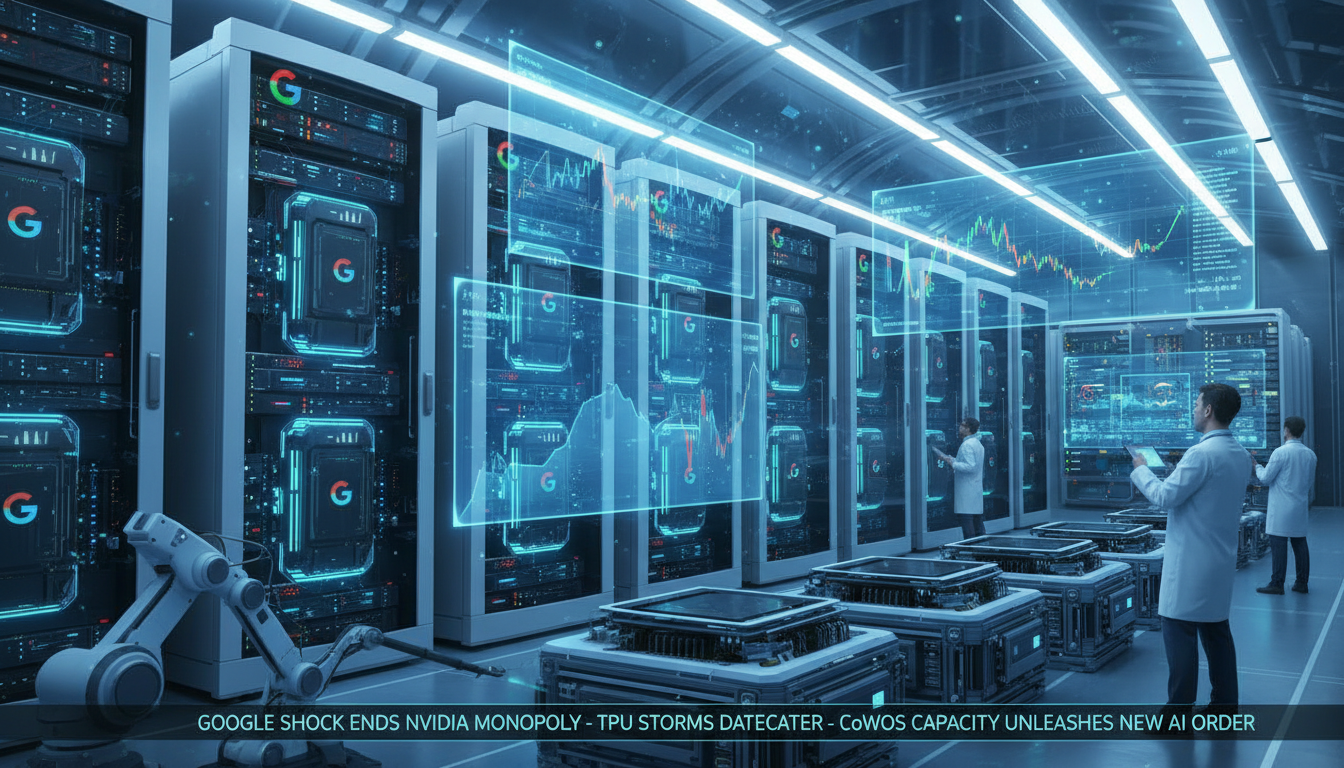● Nvidia Revenue Shock, AI Investment Doubts
Nvidia Financial Analysis and AI Trends – Unveiling the Hidden Truth Behind Inventory, Accounts Receivable, and Cash Flow
Changes in Inventory and Accounts Receivable, and Current Status of AI Investments
The first sentence highlights the “real reason behind the significant drop in Nvidia-related stocks.”
Amidst the rising heat of AI investments in the global economy and the 4th Industrial Revolution era, financial analysis issues related to AI investment are once again garnering attention.
The article points out the increase in inventory and the difference in the rise of accounts receivable, explaining that this cannot simply be dismissed as ‘cooking the books’ or ‘manipulating the accounts’ but rather reflects a structural problem.
In particular, the increase of accounts receivable growing at 9.5 times compared to the 7.8 times in sales growth raises concerns among investors about the deterioration of cash flow.
Furthermore, Nvidia’s increase in inventory alongside a surge in AI-related investments can be interpreted as a strategic move in anticipation of customer demand.
Thus, financial analysis data requires economic logic and market analysis beyond simple figures in the context of the 4th Industrial Revolution era.
Corporate Diagnosis Points: Correlation Between Inventory, Accounts Receivable, and Cash Flow
The text highlights that the Days Sales Outstanding (DSO) is actually shortening, and that surplus cash flow has increased compared to before.
This type of analysis is a core point rarely addressed in ordinary articles and serves as a crucial clue for establishing AI investment strategies through financial analysis.
By distinguishing between consumables and finished goods among inventory assets, it explains the actual production situation, clarifying the misunderstanding that ‘inventory is piling up’ as instead being interpreted as an increase in demand due to production expansion.
In other words, analyzing changes in numerical figures reveals insights into the company’s supply chain management and lead time management strategies for customer companies.
From a market analysis perspective, interpreting financial statements related to AI investments becomes a critical indicator reflecting the company’s soundness and future liquidity strategies.
4th Industrial Revolution Era, Global Economy, and AI Investment Outlook
At this intersection of global economic outlook and AI investment trends, companies are enhancing competitiveness through improved productivity, increased efficiency, and cost reductions.
Based on Nvidia’s earnings call data, companies’ use of AI technologies to achieve innovation can be seen as a representative case reflecting the trends of the 4th Industrial Revolution and artificial intelligence.
In particular, under the expectation that future liquidity will be eased, long-term investment strategies and selecting the wheat from the chaff have become even more important than short-term adjustments.
In this context, a solid financial analysis-driven AI investment strategy is required even amidst global economic uncertainties.
The key economic keywords we should all focus on—‘AI investment,’ ‘global economy,’ ‘financial analysis,’ ‘market analysis,’ ‘4th industrial revolution’—lie at the heart of this discussion.
Market Controversies and Reality – What Is the Real Reason?
Amid various allegations and criticisms, the article reveals efforts to correct the simple misunderstandings regarding “cooking the books” or “manipulating accounts.”
In reality, the normal range of accounts receivable and the reasons for inventory increase are analyzed as strategic responses to anticipate customer demand, rather than being merely due to poor management.
In particular, the high credit ratings of major clients (double A and triple A) support this claim, suggesting that the strategy involves long-term growth rather than short-term cash outflows.
Temporary stock price drops due to external economic variables like interest rate freezes can be viewed as healthy market adjustments and are likely to lead to liquidity expansion next year.
Ultimately, the current controversy underscores the need for a reassessment of long-term investment strategies rather than a short-term volatility issue in AI investments and global economic outlooks.
Future Outlook and Investment Strategy – A Time for Picking the Wheat from the Chaff
In the future, the AI market will not only be about technological advancements but also about the survival of companies with financial stability and sustained growth momentum.
Investors need to develop a sound AI investment strategy through a picking the wheat from the chaff approach based on performance.
Therefore, risk diversification strategies through staggered buying and investment decisions from a long-term perspective are crucial.
The current healthy market correction may actually provide buying opportunities for long-term investors, and attention should be paid to technological innovations that will drive significant changes in the global economy and the 4th Industrial Revolution.
Thus, AI investment decisions based on financial analysis will assist investors in gaining clearer market analysis and strategic planning.
[Related Articles…]Understanding Nvidia’s Financial Analysis
Detailed Analysis of AI Investment Strategies
*Source: [ 월텍남 – 월스트리트 테크남 ]
– AI관련주 대폭락의 원인? 제가 직접 재무제표 뜯어봤습니다
● Nvidia Scandal Sparks Financial Crisis Fears
NVIDIA’s Accounting Manipulation Controversy and Financial Fraud Allegations… A Detailed Analysis at the Intersection of AI Trends and Global Economic Outlook
1. Core Points of NVIDIA’s Performance and Financial Fraud Controversy
With NVIDIA’s earnings announcement, financial markets are rife with allegations of “accounting manipulation” and “financial fraud.”
According to accounting experts, the increases in accounts receivable and inventory figures show unusual patterns compared to usual trends, leading to the spread of controversy.
In particular, concerns have been raised regarding the growth rate of accounts receivable outpacing revenue growth.
However, experts explain that it is difficult to definitively label this as fraud due to the robust cash flow of big tech clients.
This analysis is garnering significant attention in the financial markets at a time when global economic outlook and AI trends are intersecting.
2. Interest Rate Freeze and Possible Rate Cuts – Uncertainty and Opportunities in the Economy
Currently, the financial market is focusing on the possibilities of an interest rate freeze amidst extreme fear sentiment.
Various forecasts show a 60% likelihood of a rate freeze in December and a 30% possibility for January, increasing investor anxiety.
Global economic forecasting institutions like Morgan Stanley do not rule out the possibility of rate cuts, which could be linked to the rise in asset values from the expansion of AI investments in the fourth industrial revolution.
Such changing monetary policies are closely related to AI trends and the global economic outlook, suggesting that a rate cut would revive the stock and real estate markets.
3. Employment, Inflation Situations, and Fears of Economic Slowdown
Although employment indicators have surpassed expectations, the rising unemployment rate shows an ambiguous trend.
The increase in non-farm employment along with a sharp decline in job openings could be interpreted as signals of an economic slowdown or recession.
The combined effects of rising prices, geopolitical conflicts, and wars are adding significant uncertainty to the global economic outlook.
This situation suggests that while it drives AI trends and innovations in the fourth industrial revolution, it could simultaneously act as a risk factor in the financial markets.
4. Increase in Accounts Receivable and Inventory – A Normal Adjustment Process from an Accounting Perspective
The phenomenon of rising accounts receivable and inventory at NVIDIA has shown patterns similar to those observed in the past, making it unreasonable to simply label it as fraud.
Accounting professionals assert that companies maintain normal payment cycles, and the strong payment ability of big tech clients suggests the allegations have been overly exaggerated.
Of course, smaller AI firms may face liquidity issues, but the general analysis indicates that global companies like NVIDIA have sufficiently secured trustworthiness.
5. Controversy Over AI Bubble and Reality of the Fourth Industrial Revolution
Concerns over an AI bubble and issues raised by OpenAI’s auditors have been prominently featured in the internet and media.
However, it is difficult to draw definitive conclusions due to the nature of private companies and the non-disclosure principles (NDA) of global big accounting firms.
Additionally, while the downturn in the stock market and extreme fear sentiment may temporarily dampen investor sentiment, in the long run, the innovations in AI and the fourth industrial revolution are likely to stabilize asset values and contribute to economic recovery.
This perspective emphasizes the importance of interpreting the financial fraud controversy from multiple angles.
NVIDIA’s earnings announcement and the increases in accounts receivable and inventory indicators have sparked allegations of financial fraud, but considering the robust cash flow of big tech clients, it is difficult to conclude it as mere fraud.
The prospects of interest rate freezes and cuts are driving the global economic outlook and AI trends, suggesting that uncertainties in the economy may also act as opportunities.
While concerns about employment and inflation persist alongside fears of economic slowdown, the account adjustment processes and innovations in the fourth industrial revolution herald long-term increases in asset values.
[Related Articles…] NVIDIA Earnings Controversy Clarification | Analysis of Interest Rate Cut Prospects
*Source: [ 월텍남 – 월스트리트 테크남 ]
– “엔비디아 장부조작 /AI 금융사기논란” 미국CPA가 분석해봤습니다
● Economic chaos looms as AI disrupts industries
Executive Leadership Change and Organizational Culture Innovation Strategies Optimized for the AI Era
Redefining the Leader’s Language and Organizational Culture
The language and behavior of leaders convey the core values to all members of the organization.
As a company grows, it often happens that members lose sight of core values such as ‘customer-centricity’ and ‘creativity,’ but when leaders repeatedly articulate these values clearly, the culture is naturally internalized.
Recent studies and cases demonstrate that when CEOs and executives continuously communicate articulated messages, a strong organizational culture is formed throughout the organization.
In particular, in the context of global economic forecasts and the AI era, the role of leadership helps the organization respond flexibly to rapidly changing external environments.
Work Cleansing: A Clean Sweep of Inefficient Reporting and Meetings
It is important to secure time and resources through unnecessary meetings and reports, known as ‘work cleansing.’
Regularly conducted work cleansing encourages members to review and improve their own work progress and unnecessary procedures.
In fact, some advanced companies review all meeting and reporting practices every 2-3 weeks to derive new insights and enhance execution power.
Such changes enable the organization to make faster decisions and maximize work efficiency due to the adoption of AI and technology.
The Strong Influence of a CEO’s Words and Actions
In organizational culture innovation, the most important factor is not just system improvement but the words and actions of the CEO and senior executives.
When the CEO goes out to interact directly with customers and demonstrates the core values in their own language, all employees tend to imitate this behavior.
This shift in leadership allows organizational members to reflect the leader’s language in their own work, which ultimately strengthens the overall competitiveness of the organization.
Especially in today’s fast-changing global economy and AI era, consistent messaging and execution from the CEO serve as crucial elements for corporate success.
Innovation in Working Methods and Sharing Real Cases
Companies are redesigning existing meetings, reports, and reporting systems to introduce new communication protocols.
For instance, Amazon and Google routinely check core cultural elements daily or weekly, maximizing operational efficiency through small improvements.
Additionally, the practice of executives regularly going to the field to interact with customers and build problem-solving experiences is also attracting attention.
These changes lead to enhanced collaboration across departments and foster a learning culture through reviewing both failures and successes in challenging tasks.
AI Trends and Organizational Changes Due to Economic Forecasts and the Fourth Industrial Revolution
With the acceleration of recent economic forecasts and the Fourth Industrial Revolution, the integration of AI presents a new paradigm in organizational operations.
Companies are automating work processes based on AI, enhancing efficiency through data analysis, and building systems that rapidly respond to changes.
Moreover, the innovation of leadership and organizational culture plays a crucial role not only in internal improvements but also in securing competitiveness in the context of global economic forecasts.
Ultimately, achieving economic success requires changes in internal management methods, such as the articulation and practice of executives’ language and work cleansing, as well as technological innovation.
[Related articles…] Real Cases of Leadership Innovation | Success Stories of Organizational Culture Change
*Source: [ 티타임즈TV ]
– 임원이 말하는 방식, 일하는 방식 바꿔야 조직이 바뀐다 (권석균 SK아카데미 RF)



